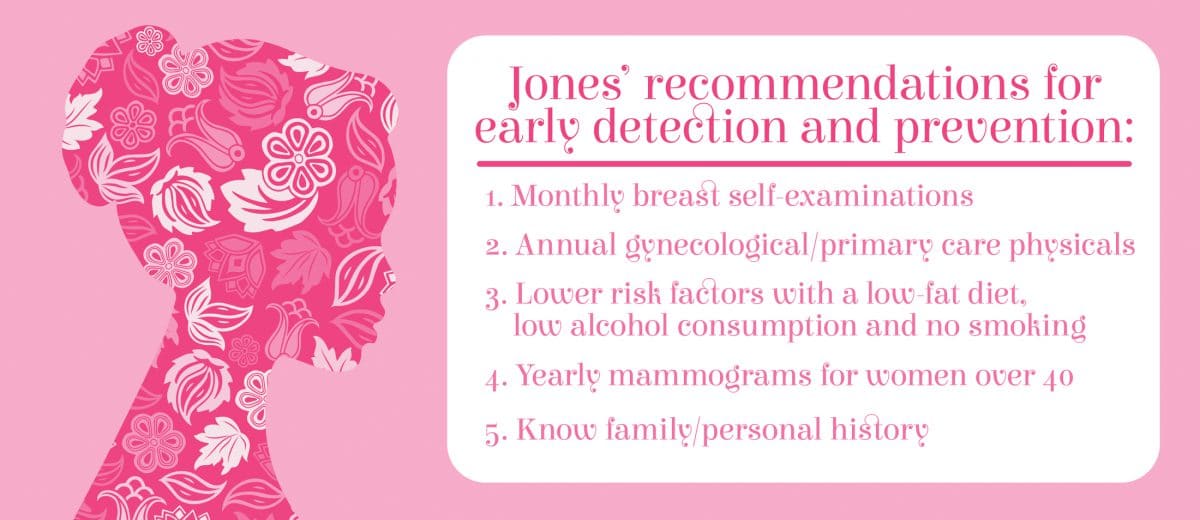The American Indian Cancer Foundation brings attention to Indigenous women during Breast Cancer Awareness Month with Indigenous Pink Day. On Oct. 15, they encourage support for Native communities’ struggle with the disease by wearing pink and sharing photos on social media with the hashtags #IndigenousPink and #IndigenousPinkDay. According to the AICF, breast cancer accounts for the second-highest number of cancerous deaths in Native women.
“Native women have a higher chance of developing breast cancer than non-Hispanic whites; they also have a higher breast cancer death rate. Indigenous Pink Day aims to raise awareness of breast cancer disparities in Indian Country and educate community members about the importance of early detection and screening,” said AICF Cancer Programs Manager Lindsey Petras.
Citizen Potawatomi Nation opened its CPN West Clinic Imaging Center in 2019 and recently expanded with a specialized mammography unit. Lead Mammography Technician Christy Jones brought 35 years of experience to CPN in spring 2020. The top-of-the-line equipment continues to impress her, including the 3D mammography machine that simultaneously takes 3D and 2D images.
In patients with dense breast tissue, 3D mammography is impressive because it takes the pictures in different planes of the breast. This allows the radiologist to see multiple images in each of the views rather than the standard two-dimensional images.

“Early detection is your key”
The National Breast Cancer Foundation recommends women over 40 get a mammogram every one or two years. Those with a family history of breast cancer and other risk factors should talk with their health care provider about starting sooner.
“Think of it like a pap smear or a chest X-ray or anything else,” Jones said. “Mammography needs to be viewed not only as a diagnostic tool but also added as part of your annual screening. Newly developed abnormalities can then be caught sooner. Early detection is your key. Earlier detection could mean a better outcome of your prognosis and even a lesser treatment and/or treatment time.”
While mammograms detect cancerous masses imperceptible by touch, many breast cancer patients notice larger ones first. Jones believes that monthly self-examinations help find patients’ lumps. She recommends picking a day once a month following the menstrual cycle and performing it in the shower.
“Go into the armpit, the axilla, and to bottom of the clavicle,” she said. “All of that is considered breast tissue. So, do a good exam on yourself, know your body and what is normal for you and what is new.”
Annual gynecological or primary care physicals remain essential in addition to knowing family history. It is also important to maintain records and transfer mammography results when switching doctors. The American Indian Cancer Foundation recommends preventative measures such as breastfeeding, quitting smoking, limiting alcohol consumption, exercising regularly and maintaining a healthy weight.
The Indigenous Pink Day theme for 2020 is #AllBodiesHaveBreasts. Approximately 2,100 men in the U.S. receive breast cancer diagnosis every year.
“While there are factors that increase a person’s risk for developing breast cancer, anyone can get it,” Petras said. “This year’s campaign strives to educate all Indigenous people about the importance of breast health to reduce breast cancer inequities in our communities. We want to remind people that all bodies have breasts, and it’s important to take care of them.”
Visit cpn.news/homeexam for a guide on self-examinations from the National Breast Cancer Foundation. On Oct. 15, dress in pink and share photos on Facebook, Twitter and Instagram using #IndigenousPink, #IndigenousPinkDay, #CancerScreeningSavesLives and #BreastCancerAwarenessMonth. Find more resources and information at americanindiancancer.org.
